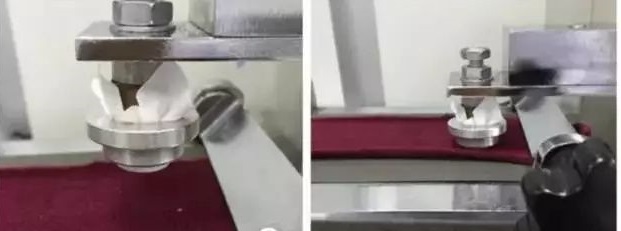When bags keep their color and size, you keep happy clients.
Colorfastness and shrinkage are key indicators for bag industry
Bags are often carried close to the body and thus to the cloth of your client. Because of this there is a chance the color of the fabric of the bag will transfer to the clothing. This will certainly have a negative impact on the user experiences of the owner of the bag. The same for the shrinkage, this might jeopardize the shape of the bag.
This post will share with the testing and national and international quality standards that apply to ensure the color quality, size and shape of the bags remain intact when washed, exposed to light, or rubbed. For the bag industry the risk of transfer of color by rubbing is most common. But also, the colorfastness due to exposure to daylight for outdoor bags and backpacks is a relevant risk factor.
Colorfastness and shrinkage standards
There are several international standards for colorfastness:
BS EN ISO 105-B07 –specifies a method for determining the resistance of the color of textiles, of all kinds and in all forms, to the combined effect of wetting with acid or alkaline artificial perspiration solutions and an artificial light source representing natural daylight.
AATCC Test Method 125: Colorfastness to perspiration and light, as designated by the American Association of Textile Chemists and Colorists (AATCC).
AATCC Test method 8 Colorfastness to Crocking: is designed to determine the amount of color transferred from the surface of colored textile materials to other surfaces by rubbing
Test procedures employing white test cloth squares, both dry and wet with water, are given. As washing, dry-cleaning, shrinkage, ironing, finishing, etc., may affect the degree of color transfer from a material, the test may be made before, after, or before and after any such treatment.
Principle:
A colored test specimen is rubbed with white crock test cloth of (50 x 50) mm under controlled conditions, like 20 Celsius and 65% humidity.
Color transferred to the white test cloth is assessed by a comparison with the Gray Scale for Staining (AATCC Evaluation Procedure 2) or the Chromatic Transference Scale (AATCC Evaluation Procedure 8) and a grade is assigned.
How does rubbing transfer color?
When the desired color of one object, in our case a bag, moves to a second object, like clothes, not intended to be that color we speak about crocking or rubbing.
To test the colorfastness under rubbing or crocking conditions a piece of standardized white cotton cloth is moved in a back-and-forth motion over the fabric for the bag to be tested. The machine to test this is called a crock meter. The cloth is moved in reciprocal fashion ten times forward and ten times back at the rate of one cycle per second for ten complete cycles, or twenty passes. This follows AATCC test method 8 procedures. The amount of transfer of pigment is quantified by observers using a series of regularly spaced tones ranging from black to white through intermediate shades of Gray, also known as the “grayscale: This test is performed in both dry and wet conditions; only the rubbing cloth is wetted in the wet testing.
Can you avoid color transfer?
When color is transferred from the fabric for the bag, it must be explained with why and how. Only when the movement behind the transfer is understood, a higher level of colorfastness can be obtained. It is possible that the color that is transferred to the white cloth was at the surface of the fabric for the bag.
When the fabric was colored to the desired color it was dissolved into the polymer that is used to make the fabric of the bag. This requires that the polymer was heated, that the color was added, and the color then needed to be mixed and distributed. Then the color had to be dispersed. It is certainly possible that there is color at the surface of the fabric; however, given the nature of the individual fibres making up the fabric, it is likely that this color was trapped within the fibre. Other than friction during the crocking test, there is no heat to soften the fibre.
In most cases the explanation of the transfer is there for one of simple abrasion. And this can not be avoided as it is a natural process.
What level of color transfer is acceptable?
A grayscale has 5 different levels of Gray and with the standards the acceptable levels of colorfastnees.
How to decide the colorfastness for your bags?
There are several factors that influence the colorfastness of the fabric used for your bags. The material used, the color and other factors like the dying process.
Now you understand a certain level of transfer of color is inevitable because it is a natural process, you should make a choice based upon the type of bags and the predictable use of these bags. The recommendation can be to avoid the use of certain colors with a high risk of transfer of color. Or to consider a different material for the bag with the same appearance.
Our sales team can help you in making the right decision.
